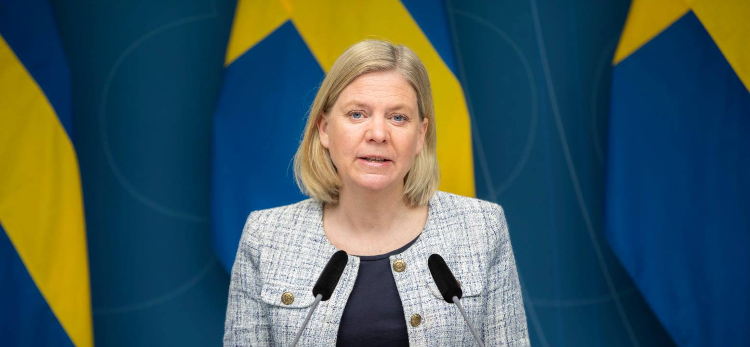Upswing for resilient Swedish economy in 2021

Resilience in the Swedish economy is strong and the recovery will gather strength in the second half of 2021.
As activity increases, the labor market will also gain strength.
Despite this, the situation remains serious, especially for those whose position in the labor market is weak.
This is clear from the county’s finance ministry’s most recent forecast, presented today by Finance Minister Magdalena Andersson.
Andersson says “Sweden’s economy is strong compared to many other countries, but even in Sweden, the labor market situation is difficult.
“The Government’s crisis measures have saved many jobs, but I have also made it clear that no country can save every job when a crisis strikes.
“We can now use the strength in the Swedish economy to implement a powerful green economic restart and ensure that everyone can be involved and – through their work – help Sweden move out of this crisis.”
Strong industrial sector, but economy remains divided
The pandemic continues to affect large parts of the world economy. The end of 2020 saw a new increase in the rate of infection.
There was a clear slow down in economic growth after it had grown quickly in the beginning of the autumn.
Even in Sweden, a rapid recovery during the third quarter was followed by a downturn in the final months of the year. But the decrease in demand at the end of 2020 was not as significant as in the beginning of 2020, partly because global industrial production was not as greatly affected.
Industry returned to previous levels of activity during the second half of 2020, while several service sectors remain severely affected.
Extensive economic policy incentives contributing to the recovery
Growth is expected to remain weak during the beginning of 2021 as a result of a continued high rate of infection.
Growth is expected to rapidly increase again during the second half of the year when the infection rate drops and restrictions can gradually be lifted.
Sweden’s GDP is expected to increase by 3.2 per cent in 2021 and by 3.8 per cent in 2022. Sweden’s economy is expected to remain in recession during this period.
Labor market recovery is expected to resume in the second half of the year.
Initially, many businesses are expected to step up production by increasing current employee’s working hours when short-term lay-offs are phased out.
As a result of this, employment is expected to show weak growth in 2021 and then pick up pace in 2022. Unemployment is therefore expected to decrease significantly in 2022 and amount to 7.9 per cent.
Temporary downturn in public finances
A responsible fiscal policy contributed to good public finances before the pandemic. Sweden therefore is well equipped to manage the recession resulting from the pandemic.
Public finances were substantially weakened in 2020 and are expected to be further weakened in 2021.
This trend is a consequence of the economic downturn and the fiscal policy measures the government has proposed to counter the effects of the pandemic.
From 2022, public finances will be strengthened as the economy recovers.
The Maastricht debt was approximately 35 per cent of GDP in 2019 and increased to approximately 40 per cent of GDP in 2020. Calculated in kronor, the Swedish currency, it is expected to grow in 2021, primarily due to the further fiscal policy measures that are taken.
Debt is expected to remain unchanged as a percentage of GDP, which is due to an increase in growth and that the Riksbank is repaying part of the currency reserve.
Gross debt will decrease rapidly as a percentage of GDP as of 2022, partly because temporary fiscal policy measures will be phased out.
The overall assessment is that public finances are in good shape and that the trend is in line with the fiscal policy framework.
Swedish Government

